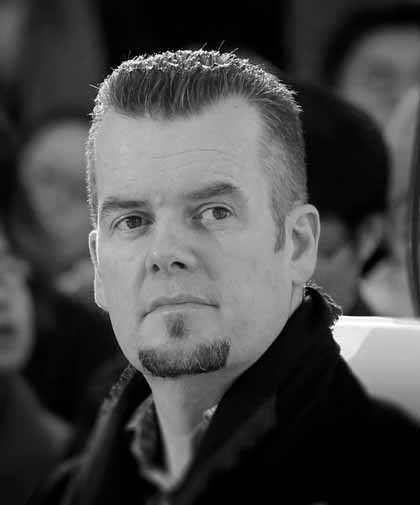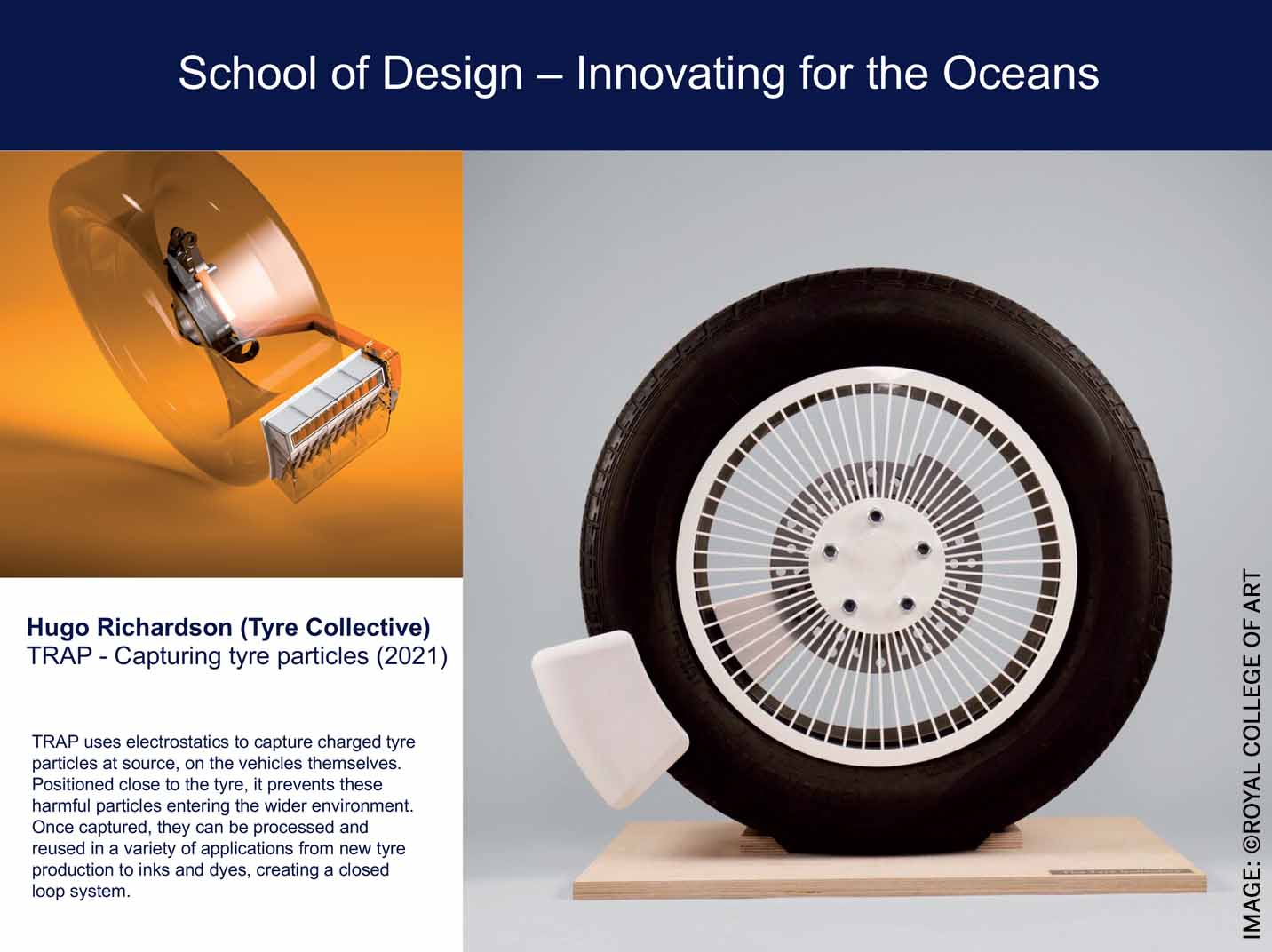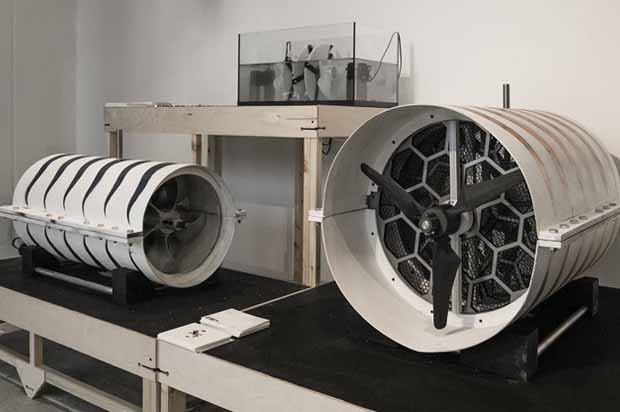Amrita Kulkarni: Let’s talk about product design in the context of Climate Change. What do you see as an emerging response from the design community?

Ashley Hall: There has been a sea change in our design methods in response to Climate Change. If you look back at the 20th century, pretty much all of our design methods were industry-based, since it was all about making products. Whether you’re a service designer, industrial designer or architect, everything is about making stuff. There’s this assumption that the first thing a designer does every morning when they wake up is to add things to the world: products, services, buildings, cities and so on. Now we’ve come to a point where we can’t keep assuming that the central role of the designer is to add. Today it is as much about subtractions as hybridisation or even dematerialising.
These are emerging questions: how do these systems work, what do they look like, who owns them and where does one get that type of work? Is that all going to be in the industrial sphere or is that going to be funded by NGOs, councils, world organisations, start-ups or local bodies from the ground up? That’s one of the things we’re looking at in the Design Products programme at the Royal College of Art (RCA). We’ve completely changed our programme ethos and questioned what is a future product.
In situations where we work with clients that come to us asking for a better smartphone or electric scooter, or a gizmo that does a certain thing, we always think about addition. But we have to go back and challenge that and spark different ways of thinking as designers. It’s going to be less about the assumption of mass-producing objects and more about developing better sophisticated and deeper solutions, perhaps also moving away from projects towards product-systems.
Moving away from projects in what sense?
This is going to sound strange. Designers tend to do linear projects that have a beginning, a middle and an end. But if you think deeply about Climate Change, it’s really about re-engaging with natural systems and understanding how you can be efficient in the ways that you add, subtract, refine, remake and redeploy materials and energy inside systems. That’s a return to circularity. It’s a profound step-change for design, which was primarily linear in the 20th century.
In moving from a linear model to circular models, we end up with different types of employments for designers: different roles, different leadership, different participants, different space. There are economic questions as well: how would you get paid for this? How does it work? There are interesting challenges ahead of us and its increasingly obvious that stop-start projects are part of the problem.
How might industry benefit from circular models that involve subtraction or imitation? What might that even look like?
A key assumption of Climate Change is that it’s about limits; having less energy, having less pollution, having less products. If you really see where some of these systems are heading, say in the automobile industry: cars are going to be very, very quiet. You’re going to be able to recharge in a lot of different places and the pollution will be centralised where it’s much easier to deal with. The product or car itself will have a lot fewer moving parts, will last for a lot longer and will be easy to service by a more diverse range of people. So, actually, those are really good things. We will have a much better consumer experience and a much better quality of life.
And I believe this is going to be the case in all industries, across the spectrum of products or services. We also have to remember that design is about efficiency; it’s always about trying to make the world a better place. With Climate Change, we have the biggest ever question about making the world a better place, but design has always been about that. It’s been about trying to improve the world and has always been a social project at the heart of it.
We can’t keep assuming that the central role of the designer is to add. Now it is as much about subtractions
How do you imagine disparate efforts across industries and companies coming together, even perhaps across countries? What is the new shared language you imagine for everyone?
I think the biggest gap I see at the moment isn’t necessarily so much across industries, or even across governments. It’s more across disciplines, and increasingly around the mental models of how we think about Climate Change. There’s a big gap between design and science. In a sense, you could accuse designers or scientists of having caused Climate Change, where scientists found new materials and major systems and helped evolve new technologies. Designers productised those and turned them into fast moving consumer goods, speeding up disposal cycles.
At present there’s a huge group of scientists who have, over a long period of time, identified drivers of Climate Change and have more and more information about it. There’s a pressure put on scientists, or perhaps they put it on themselves, that they need to fix this because they found it. Perhaps they believe they’re the group of people who needs to save the world from itself. But there’s also a realisation that it can’t be done just by science on its own and we have to look beyond some of the fundamental processes and technology generation models to solve Climate Change. These social aspects then become really important.
For me, design sits between technology and society. It sits in a space where it mediates technology. Great design isn’t necessarily techno- positivist. Design is a useful pendulum that swings back into the social space as well, and talks about a balance. Currently at the RCA we’re talking about how we as designers can partner with science and take design research into spaces that were traditionally scientific. This is the way forward to collaborate, develop new strategies and gather a common language.
What are the other players in this ecosystem that perhaps don’t have a presence today but might benefit from this?
This brings me to the idea of decolonising design. Design seems very much a western model of efficiency, production and spaces inspired by the Bauhaus, with a truth in materials, simplicity, mass production — a particular mindset. It’s increasingly obvious that this is a very limited way of thinking about design in the world, with a lot of our tools and methods still emanating from that former golden era of design.
There are other models of designers and creativity that haven’t been recognised, or have already existed but they’re still called different things. On a global level, we really have to start questioning this western efficiency and modernist conversation of design and realise that to solve issues of Climate Change, we’re going to need diverse models of design. If you look at the problems and challenges that we tackled in the 20th century, they’re relatively simple compared to the 21st; we now need more diverse approaches.
In a sense, you could accuse designers or scientists of having caused Climate Change
Which are some other models that you’ve seen, or ones that have existed elsewhere?
Designers are starting to go back and look at things that were initially considered by the west to be craft processes, deemed as just ‘making stuff in a field out of clay’ or ‘chopping down trees to carve as a chair’ or ‘just casting objects’. There has been a patronising approach towards making cultures in different parts of the world and a refusal to see these as advanced or intelligent problem-solving activities, which in fact they are. Several researchers at the RCA School of Design are studying different types of production methods in historical parts of Africa and imagining how these methods could be brought to challenge mainstream contemporary design ideas.
The model of ‘western’ design removes objects from their environments whether through computer modelling or by treating objects as absolutes on their own. By doing this, we lose the sights, sounds, smells and people around these objects, effectively breaking the connections with the environmental community the object was intended for. These abstract objects are then pushed out into the world, effectively constituting wasted production. In some eastern philosophies, it’s impossible to separate objects from backgrounds; objects and their environments are often inseparable.
But this is quite a challenge in terms of scalable design. How do you generate new concepts with objects in their environment instead of separated out into a design studio or in a factory space? I don’t think anybody’s got any answers at this point. But there’s certainly some interesting thinking around the need to decolonise design and change our educational systems in the way that we teach design: who we teach and how we teach.
 |
Let’s talk about pedagogy and, more specifically, your students. Apart from introducing them to new theories and models, what are the other kinds of behaviours that you’re seeking to incentivise among them?
It’s not the behaviours of students I’m really interested in; it’s actually how they will change the behaviours of others. If you think about Climate Change, there’s two extremes in terms of how people think they can solve it. One is geoengineering: let’s make a massive machine that extracts all the carbon from the air and buries it somewhere. This is pretty unfeasible because if you made a machine that big it would create more Climate Change; and geopolitically it would be totally unacceptable for one country or a group of countries to do this.
Then on the other end of the scale, we know that we need to lead lives that have 90% less energy than we use now, certainly in western countries. And there are a lot of us who have assumptions about what equals progress and success and the kind of badges of being a successful human being. These assumptions need to be questioned. The big role for designers in terms of behaviour is to understand more models from behavioural science and learn how we can trigger new behaviours. There is major responsibility and political power in changing behaviours of large groups of people. So, it’s not so much the behaviours of my students but how they understand their roles and responsibilities to start helping to shift the behaviours of large groups of people.
When I started as a student at the RCA in the early ’90s, we knew about people like Victor Papanek and could easily access ecological thinking from luminaires like him. They seemed to be about the past though, which is probably because we didn’t know what to do about the issues. At the time, our ideas about being a responsible designer were simpler, coming down to creating less pollution or sourcing wood from a sustainable resource. The actual methods and understanding of good sustainable design practice were really limited. It was only in the early 2000s that larger numbers of designers really started thinking deeper about what those new more powerful methods should actually be.
What evolution have you perceived in the time you’ve been teaching?
I remember asking incoming students 10 or 12 years ago: “Why did you come here?” And probably about a third said something that sounded like ‘Climate Change’. That is a reasonably high number. If I ask the same question today, people might ask me why I’m even asking this question.
It’s an assumption that even if our students aren’t doing work that is directly tackling Climate Change, I think all of them recognise the need, the imperative, at some stage in their work. And something important has happened in recent years: two years ago, Climate Change was about the future and now Climate Change is about the present. Before, it was something about to happen, or happening to somebody else, or happening in another part of the world. And over the last two years, probably because we’ve been so glued to the news, we’ve crossed the Rubicon and gotten over that wall, and arrived at a time when it’s tangible. It’s now.
What triggered this shift?
It’s a mix of things. One is the obsession with news and reading about what’s actually happening as we live through Covid. But of course, it’s also the climate actually changing. New and uncommon interactions between people and other living systems, like food consumption processes or movement of animals in different ways have also led to the shift. We’ve seen a large number of events around the world — fires in California, fires in Australia, floods in China, big floods in Europe — all of which have claimed large numbers of lives. Most people have now seen an event, an unusual climate event, either directly in front of them or in their nation. That starts to galvanise change.
Two years ago, climate change was about the future and now climate change is about the present
What, realistically, is the impact of cutting-edge design or an institutional philosophy on people who are behind the ball in terms of understanding Climate Change, like deniers?
Here it’s worth taking a leaf from the playbook of politicians. When they come up to an election, there’s people who are for them and you don’t need to do a lot with them because they already like you. Then there’s people against you, and you can’t do much about them because they’re never going to vote for you. It’s really about the swing voters: the people in the middle. In terms of design activity, the most important part is to understand that a large section of the population is not living by Climate Change, doesn’t know what they can do, finds it an inconvenience, or finds it a very complicated idea to understand.
We had a really nice talk recently as part of our NEMO (New Economic Model for the Oceans) grand challenge project, where psychologist Dr Ana Aznar talked about psychological distance. Her expertise is around Climate Change, in particular with children. She talked about how until recent times, when we saw people suffering from Climate Change, they were halfway around the world, they were a different race, spoke a different language and it didn’t look like it was happening anywhere near where we were living. So, we would simply think, “Oh, that’s just somewhere else.” But recent Climate Change events have brought people much, much closer to it and made it tangible. People then start to engage, because the psychological distance gets filled in. That’s a parallel for design as well. That famous photograph of the turtle with a plastic bag over his head — it’s incredibly tangible — and shrinks the psychological distance straightaway.
We then have people who stop buying plastic bags, start recycling or force industries to change their production processes, supply chains, materials. Even with these successes, the real challenge is two degrees centigrade; that’s the threshold we have to avoid. But we don’t have an image for two degrees centigrade. There are large areas or issues around Climate Change that we don’t have images for; images that we can put in front of people that collapse the psychological distance.
So, the role of a designer expands much beyond the activity of design itself. It is almost as though future designers will also be activists. As a designer, how do you see this expanded responsibility?
Well, if you seriously want to make change, you always have to have some kind of activist approach. A desire to make the world a better place by addressing social media issues or issues in healthcare, or other things in the world around you. There’s always that motivation, whether it’s activist with a capital ‘A’ or activist with a small ‘a’, but it’s embedded in all designers. We tend to be short-term pessimists and long-term optimists. We’re always criticising what we see in front of us because it’s not good enough, but we’re always coming back to it at the end of the day.
Ashley Hall is Professor of Design Innovation at the Royal College of Art in London and a visiting Professor at the Central Academy of Fine Arts in Beijing. He leads postgraduate research in the design school, MRes Healthcare Design and is acting head of Design Products MA. His research focuses on innovative methods in design thinking, design for safety, experimental design, design pedagogy, globalisation design, healthcare and cultural transfer.



Comments (0)